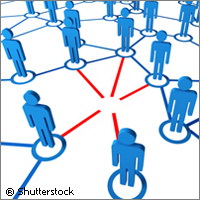The friend of my enemy is really my enemy
Researchers in Austria, the UK and the US have proved an important social theory using a massive multiplayer online game (MMOG). The findings provide the first quantitative evidence for the Structural Balance Theory, which holds that some networks of relationships are more stable than others in a society. Structural Balance Theory focuses on the positive and negative links between three individuals, and supports the idea that people are more likely to believe that 'the friend of my enemy is my enemy' than to make an enemy of a friend of a friend. The work, presented in Proceedings of the National Academy of Sciences (PNAS) journal, also paves the way for scientists to develop more realistic models of complex human networks. Most contemporary studies of social networks are based on the analysis of electronic data including e-mails, mobile phone communications and online shopping. These offer substantial benefits over traditional methods, such as questionnaires, as they permit researchers to study social dynamics on a larger scale than ever before. However, such studies tend to be based on simple parameters (e.g. age, sex, volume of interchanges) without taking into account the wider, real-life spectrum of human interactions. In this latest study, the researchers made use of a large-scale online game in which the players have the opportunity to experience alternative lives, making friends and foes and trading or fighting. The advantage of using such a game is that all of these interactions are recorded in log files, which can be analysed. The game under study, Pardus, counted roughly 300,000 players. 'I find it fascinating to understand how we all interact with one another to form complex social networks,' commented Dr Renaud Lambiotte of the Institute for Mathematical Sciences at Imperial College London in the UK. 'I think it is astounding that I'm this tiny point in such an enormous network of people. Our new study reveals in more detail than ever before the key ingredients that make these networks stable.' Dr Lambiotte and his colleagues from Austria's Medical University of Vienna and the Santa Fe Institute in the US analysed data on six types of interaction (three 'positive' and three 'negative' links): friendship; communication; and trade (positive); and hostility; aggression; and punishment (negative). Each one of these interactions defines a network on its own, and when taken together form one large network. The researchers examined both the individual networks and the interplay between all the networks. They showed that, as one might expect, positive relationships form stable networks in society. In positive relationships, players were more likely to reciprocate actions and sentiments than in negative ones. For example, if Ann declares that Beatrice is her friend, Beatrice is likely to declare that Ann is her friend. But if Ann declares that Beatrice is her enemy, Beatrice is less likely to reciprocate. Some networks were found to overlap extensively, as players are likely to engage in similar interactions, and others tended to exclude each other. Friendship and communication networks overlapped, of course, as friends tend to chat. Trade and hostility did not overlap at all, establishing that enemies tend not to trade with one another. Dr Renaud Lambiotte explained, 'This may seem like an obvious finding, as we would all prefer to communicate more with people we like. However, nobody has shown the evidence for this theory on such a large scale before.' The research, which received funding from COST ('European Cooperation in Science and Technology'), offers a valuable mathematical tool to study large, complex human networks. The next step for the researchers is to develop models for examining biological problems such as the way different regions of the brain communicate with each other.
Countries
Austria, United Kingdom, United States

